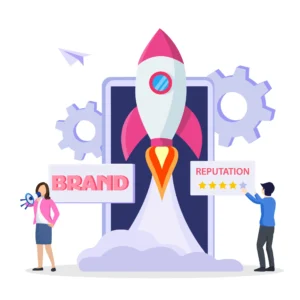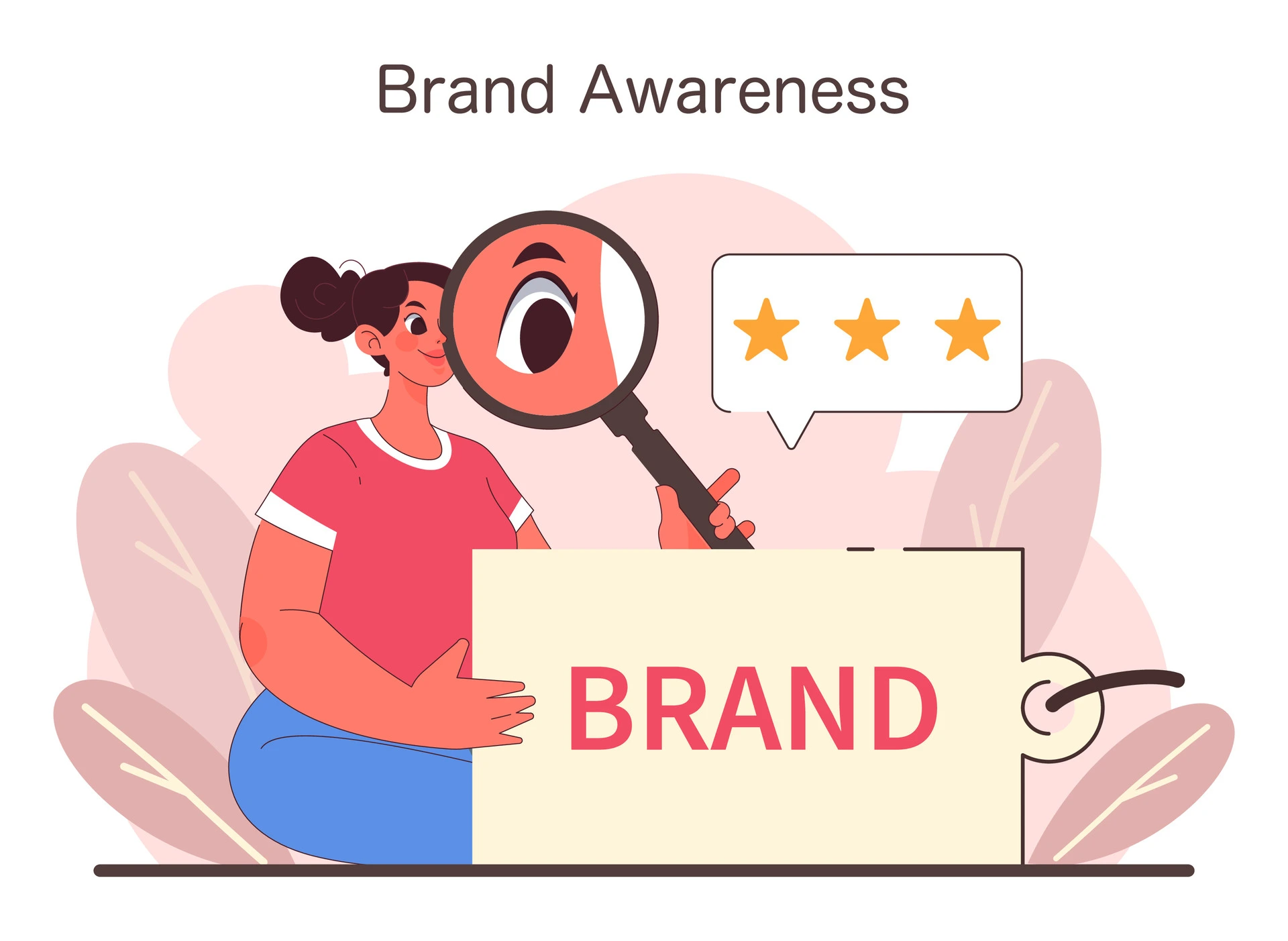Brand development strategies are the cornerstone of building a strong and recognisable brand. These include things like deciding what your brand stands for, how it looks, and how it talks to customers. According to Forbes, implementing strong brand development strategies, such as creating a uniform message and promoting brand identity, can significantly impact revenue, potentially increasing it by up to 23%. They help businesses set themselves apart, gain trust, and keep customers coming back for more.
In this blog, we’re diving deep into brand development strategies, exploring key concepts, best practices, and actionable insights to help businesses unlock sustainable growth. From understanding the fundamentals of branding to implementing innovative tactics, our aim is to equip readers with the knowledge and tools needed to propel their brands to new heights.
Know More About Branding
- 5 Branding Methods for Achieving Business Excellence
- The Future of Strategic Brand Management: Trends to Watch
- Crafting Effective Brand Positioning Statements: A Comprehensive Guide
- 4 Essential Insights to Supercharge Your Brand Marketing Strategy
1. Understanding Brand Development Strategies
A. Defining Brand Identity and Positioning
Brand identity encompasses the visual and conceptual elements that distinguish a brand in the market. It includes elements such as logo, colours, typography, and messaging, which collectively communicate the brand’s essence to the audience. Positioning, on the other hand, refers to how a brand is perceived relative to its competitors in the minds of consumers. It involves crafting a unique value proposition that resonates with the target audience and differentiates the brand from others in the market.
B. Market Research and Target Audience Analysis
Market research plays a pivotal role in understanding consumer preferences, market trends, and competitor strategies. Through comprehensive market research, brands can gain valuable insights into their target audience’s demographics, psychographics, behaviours, and preferences. This information is crucial for developing targeted marketing campaigns, tailoring product offerings, and identifying opportunities for growth.
C. Utilising Data Analytics for Insights
Data analytics has emerged as a powerful tool for brands to gain deeper insights into consumer behaviour and market dynamics. By leveraging advanced analytics techniques, brands can analyse large volumes of data to uncover actionable insights. These insights enable brands to make informed decisions, optimise marketing strategies, personalise customer experiences, and drive sustainable growth.
D. Case Study: Pepsi vs. Coca-Cola
The rivalry between PepsiCo and The Coca-Cola Company serves as a compelling case study in brand development strategies. Both beverage giants employ diverse tactics to capture market share and engage consumers. While Pepsi often focuses on youth-centric marketing and celebrity endorsements to convey a message of vitality and excitement, Coca-Cola emphasises its rich heritage, universal appeal, and emotional connections with consumers. Through innovative marketing campaigns, product innovations, and strategic acquisitions, PepsiCo and Coca-Cola continue to vie for consumer loyalty and drive sustainable growth in the highly competitive beverage industry.
2. Building a Sustainable Brand Strategy
A. Crafting a Unique Value Proposition (UVP)
Crafting a Unique Value Proposition (UVP) lies at the heart of brand development strategy. It entails defining what sets a brand apart from its competitors and articulating this distinctiveness in a compelling manner. A well-defined UVP not only communicates the brand’s promise to its target audience but also forms the foundation for all branding efforts.
B. Importance of UVP in Brand Differentiation
Brand differentiation is crucial for standing out and capturing consumer attention. A strong UVP serves as the cornerstone of brand differentiation, enabling companies to carve out a unique position in the minds of consumers. By clearly articulating the value they offer, brands can attract and retain customers amidst stiff competition.
C. Implementing Brand Architecture
Implementing a coherent brand architecture is essential for ensuring consistency and clarity across all brand touchpoints. Brand architecture involves structuring the relationship between different products or services within a brand portfolio, as well as defining how they are positioned relative to each other. A well-designed brand architecture framework helps streamline communication, minimise confusion, and maximise brand equity.
D. Strategies for Multi-Product or Multi-Service Companies
For multi-product or multi-service companies, developing an effective brand strategy requires careful consideration of how each offering contributes to the overall brand identity. This may involve creating sub-brands or product lines that cater to distinct market segments, while still aligning with the overarching brand promise. Additionally, it’s essential to ensure consistency in messaging and visual identity across all offerings to reinforce brand coherence and integrity.
E. Case Study: Starbucks’ Brand Guidelines
A compelling case study illustrating effective brand development strategies is Starbucks, the renowned coffeehouse chain. Through its meticulously crafted brand guidelines, Starbucks has consistently delivered a seamless brand experience across its global network of stores. From its distinctive green logo to its commitment to quality and sustainability, Starbucks’ brand identity resonates with consumers worldwide, driving both loyalty and advocacy.
3. Leveraging Digital Platforms for Brand Development
 Harnessing the power of online platforms is important for brand development strategies aimed at sustainable growth. This section explores key tactics, including social media marketing, content creation, and influencer partnerships, showcasing how leading brands have successfully utilised these methods to enhance their brand presence and engage with their audience effectively.
Harnessing the power of online platforms is important for brand development strategies aimed at sustainable growth. This section explores key tactics, including social media marketing, content creation, and influencer partnerships, showcasing how leading brands have successfully utilised these methods to enhance their brand presence and engage with their audience effectively.
A. Social Media Marketing Strategies
Social media platforms have become indispensable tools for brand development, offering unparalleled reach and engagement opportunities. Implementing a comprehensive social media marketing strategy involves identifying the right platforms for your target audience, creating engaging content, and fostering meaningful interactions. By leveraging the diverse features of platforms like Facebook, Instagram, Twitter, and LinkedIn, brands can amplify their messaging and build a loyal community of followers.
B. Content Marketing and Storytelling
Compelling storytelling lies at the heart of effective brand development. Through content marketing initiatives, brands can connect with their audience on a deeper level, conveying their values, mission, and unique selling propositions. By crafting engaging narratives across various digital channels such as blogs, videos, and podcasts, brands can not only capture attention but also foster brand loyalty and advocacy among consumers.
C. Influencer Partnerships and Collaborations
Influencer marketing has emerged as a potent tool for brand development, allowing companies to leverage the credibility and reach of popular personalities to endorse their products or services authentically. By forging strategic partnerships with influencers whose values align with their brand, companies can tap into new audiences, enhance brand awareness, and drive conversion rates.
D. Case Study: Adidas’ Influencer Marketing Campaigns
Adidas’ influencer marketing strategies are a prime example of how to harness the power of personalities to bolster brand resonance. By teaming up with renowned figures across sports, entertainment, and social media, Adidas ensures its message reaches diverse demographics. From the magnetic appeal of soccer legend Lionel Messi to the fashion-forward influence of Kylie Jenner, Adidas strategically selects influencers whose ethos align with its core values of innovation and inclusivity. This collaborative approach not only amplifies brand messaging but also fosters authentic connections with consumers, solidifying Adidas’ position as a leader in the athletic apparel industry.
4. Measuring Success and Adapting Strategies
A. Key Performance Indicators (KPIs) for Brand Development
To understand how well your brand is growing, we need to keep an eye on certain indicators called Key Performance Indicators (KPIs). These are like signposts showing us if we’re on the right track. KPIs include things like how many people know about your brand, what they think about it, how loyal they are to it, and how much of the market you have. By keeping track of these numbers, we can see what’s working and what needs adjusting to keep our brand growing sustainably.
B. Feedback Loops and Customer Insights
Listening to what our customers have to say is crucial for building a strong brand. We have to create ways for them to tell us what they like, don’t like, and what they want from us. This feedback helps us understand our customers better—what they prefer, what they expect, and how they feel about our brand. By paying attention to this feedback, we can improve our products or services to better meet their needs and stay relevant in the market.
C. Case Study: Amazon’s Customer-Centric Approach
Let’s take a look at how Amazon, a company we all know well, focuses on its customers to grow. Amazon uses data and technology to learn about its customers. By knowing what people buy, when they buy, and why they buy, Amazon can suggest things they might like and make shopping easier. They also listen to what customers say, making changes based on feedback. This focus on making customers happy has made Amazon a trusted name, and that’s why it keeps growing steadily.
Ready to take your brand to the next level? Connect with us today to explore how HT Media can amplify your presence across our diverse portfolio of 25+ brands and properties. Let's turn your brand vision into reality!



















Comment